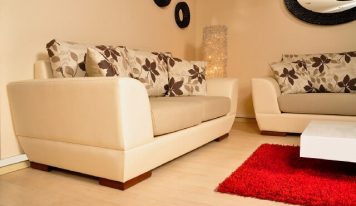As the largest surface in your home, your choice of flooring is important when it comes to interior design. This is because the floor is often the first point of contact when you enter into a home. It also acts as a canvas for you to build your home. With so many home flooring choices available, it can be difficult to pick one that is suitable. To ensure that you can firmly choose the flooring that you need without worrying about budget concerns, you can take out a monthly installment plan in Singapore.
A monthly installment plan can aid homeowners who wish to renovate their home flooring without disrupting their finances. They will be able to receive a large sum of money upfront and pay a reduced fee each month for a long period. This way, they can manage their finances and ensure that they do not have to worry when it comes to choosing their home flooring options.
If you have yet to decide on the type of home flooring to go with, here are 3 popular options as well as their pros and cons.
1. Vinyl flooring
Vinyl is a popular pick for home flooring due to its perks. They are affordable, resilient, waterproof, and they are available in many different visual styles, such as sheets, planks, tiles and more. While it can be difficult to find a better alternative, it is important to note that vinyl flooring is not the most eco-friendly option currently available on the market. HERF, which stands for High End Resilient Flooring, is a less damaging alternative that replicates the organic look of natural wood for homeowners seeking that specific design.
There are many pros of vinyl flooring, such as having a wood-look without attracting termites, being cost-effective, and being resistant to water, scratches, as well as fire. Vinyl flooring is also excellent for households with children and pets. On the other hand, vinyl flooring is not as eco-friendly as other options, and it is not dent-proof.
2. Tile flooring
Tile floorings are made of either porcelain or ceramic and are available in a wide variety of finishes and designs. In many HDB homes, they use tile flooring without a decorative finish or layer of glass. Tile flooring is commonly used in rooms with high-traffic and moist areas. Tiles are also non-porous and strong, making them resistant to stains and liquids. However, the grout that is in between each tile is susceptible to stains and moistures. Thus, they have to be sealed consistently for protection as moulds could start to grow.
The pros of tile flooring are that they are durable, non-porous, and easy to maintain. They are also resistant to fading and discolouration even if exposed to sunlight daily, and non-slip tiles make them excellent in areas like the kitchen. The cons of tile flooring include the regular cleaning in the grout lines, and that it can feel cold and hard underfoot.
3. Wood-look flooring
There are 3 different types of wood-look flooring that you should be familiar with. They are engineered wood, laminated wood, and hardwood.
Engineered wood mainly comprises of compressed plywood, and are suitable for bathrooms and kitchens due to their durability. Their pros are their resistance and durability to water, which causes less warping when in contact with moisture, making them optimal for the kitchen and the bathroom. The con of engineered wood is that they cannot be refinished if the top veneer is thin.
Laminated wood is made up of composite wood slabs that have been compressed and finished with a covering layer of ‘photographed wood’, allowing it to mimic any wood pattern. One positive of laminated wood flooring is their affordable cost and having a similar look to hardwood floors. On the other hand, laminated wood flooring is prone to discolouration and might look unrealistic as the grains are similar in their appearance.
Hardwood is fashioned from solid hardwoods, like walnut, lime, maple, cherry, mahogany and oak, and they are available in different textures such as hand-scraped, wire-brushed, smooth, and distressed. Hardwood flooring offers a variety of tones and patterns, like parquet, which can revitalise your floor with a coat of finish. One con of hardwood flooring that they are prone to discolouration to sunlight, and are also prone to scratches, making them hard to maintain as they will need to be polished and resealed regularly.
Conclusion
While home flooring is an important part of your interior design, it should also fit into the needs of your home. For instance, if you have multiple pets in your home, vinyl flooring is an excellent choice. Thus, by following the pros and cons above, you can choose the best option you need for each room. Seek a licensed moneylender in Singapore today and take out a monthly installation plan to make your home flooring renovation come true!








